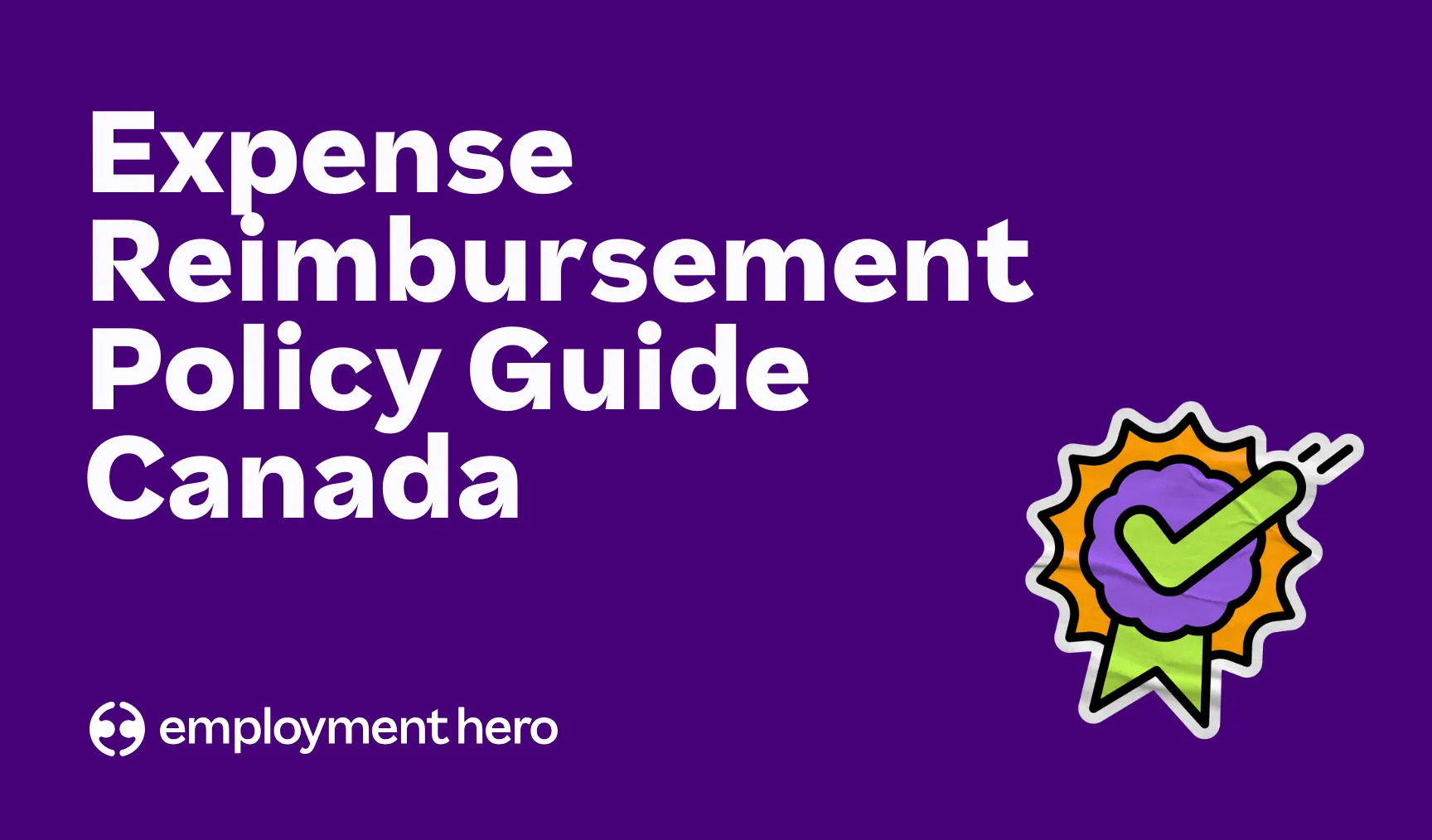Employee wellness survey template for Canadian businesses
Published
Employee wellness survey template for Canadian businesses
Published

Every business wants its people to thrive, but wellbeing isn’t something you can guess. An employee wellness survey turns hunches into insight, showing where teams feel supported and where stress is starting to creep in. For Canadian employers balancing hybrid work, inflation pressures and shifting expectations, this feedback isn’t just nice to have. It’s how you keep great people, build trust and make work genuinely better.
What is in this wellness survey?
This employee wellness survey template is built for Canadian SMBs that want a clear, human way to understand how their teams are doing. It’s divided into four focus areas: general health and stress management, corporate culture, workload and work-life balance and the systems that sustain wellbeing over time.
Each section includes statements employees can rate on a simple scale—from strongly disagree to strongly agree. These responses highlight strengths and blind spots you can address through benefits, leadership practices and workplace design.
The goal isn’t just to collect numbers; it’s to start a conversation that leads to action.
Understanding the significance of employee wellness survey questions
Wellbeing has become one of the most reliable predictors of retention, engagement and productivity. According to multiple Canadian studies, employees who feel mentally healthy are up to 30 per cent more likely to stay longer and perform better.
A well-designed employee wellness survey gives you that early signal when things start to slip. You’ll see whether workloads are realistic, if benefits actually meet needs and whether culture encourages openness around mental health. Over time, those insights feed directly into stronger retention and reduced absenteeism.
When employees feel heard, they don’t just show up—they show up motivated.
General health and stress management

Feeling healthy and managing stress shouldn’t be a luxury at work — it should be the norm. When employees have the time, tools and encouragement to take care of themselves, they bring more focus, creativity and balance to every part of their job. A good wellness culture doesn’t happen by accident; it’s built through small, consistent actions that show people their wellbeing actually matters.
These survey questions help you see whether your team feels supported or stretched thin and whether your current programs meet real needs or just tick boxes. When you understand how health and stress play out day to day, you can invest in benefits and policies that prevent burnout before it starts. That’s how you build a workplace where people can do great work and feel good doing it.
Our organization takes adequate actions to promote employee wellness.
This question measures whether wellbeing feels visible and genuine. Do your leaders talk about wellness beyond annual campaigns? Are there programs, policies and visible habits that make it part of everyday work? If the answer is “sometimes”, that’s your cue to embed wellness in performance conversations, team planning and recognition programs.
I work in a physically and psychologically healthy environment.
A healthy environment covers both ergonomics and emotional safety. Remote or hybrid teams need the same care: safe setups, healthy routines and time to disconnect. Employers that invest in this area often see a direct drop in burnout. For ideas on supporting whole-person health, explore employee health benefits through Employment Hero—modern, flexible plans that actually reflect how Canadians work today.
The mental health resources available meet my needs.
An employee wellness survey isn’t just about counting programs; it’s about matching support to reality. Are counselling options accessible in every province? Do employees even know where to find them? Measuring satisfaction with mental health resources helps you spot underused or outdated offerings before issues escalate.
Corporate culture
Culture is the heartbeat of wellbeing. You can have the best benefits in the world, but if people feel judged for using them, they won’t. A healthy culture is one where employees can speak openly, take time when they need it and know their team has their back. These survey questions help you see whether your culture lifts people up or quietly wears them down.
I can have open discussions about anxiety and stress at work.
Psychological safety isn’t built in policy—it’s built in conversation. When people can talk honestly about stress, burnout or anxiety, they don’t just feel better; they perform better. If your survey shows hesitation here, it’s a signal to build empathy from the top down. Support your leaders with training or HR advisory services that teach them how to listen first, respond with care and make mental health part of everyday dialogue.
I don’t feel judged if I take time off.
Rest shouldn’t feel like a risk. Yet many employees still worry that using personal or mental health days will be seen as a lack of commitment. When time off is respected, people come back recharged, creative and loyal. Benefits Plus helps reinforce that message with wellbeing perks that make self-care part of how your business runs, not something people have to ask permission for.
I feel supported when dealing with personal or family issues.
Life doesn’t stop when work starts and the best workplaces recognize that. Whether it’s caring for a loved one, managing a personal challenge or simply needing time to breathe, support should be flexible and judgment-free. Some employees might value adaptable schedules, others might need access to counselling or paid leave. Asking this question helps you see if your policies are doing what they promise—providing real compassion when people need it most.
Download wellness survey template
Use this ready-made set of questions to start collecting meaningful feedback from your team. Customize it for your size, sector and province, then review results quarterly to keep momentum.
Workload and work-life balance

Work-life balance isn’t a buzzword—it’s the line between thriving and burning out. When workloads are fair and flexibility is real, people bring their best selves to work. These questions uncover whether your team feels trusted to manage their time or trapped by expectations that never ease up. Balance isn’t about working less; it’s about working in a way that’s sustainable for everyone.
I find my workload reasonable.
High-performing teams often normalize pressure until it becomes invisible. This question helps you see whether “busy” has quietly turned into “burned out”. Use responses to guide resourcing decisions and rethink priorities that no longer serve your goals.
I can communicate openly with my manager about workloads and expectations.
Managers set the tone for honesty. If employees feel they can’t speak up, issues snowball. Creating open dialogue can be as simple as adding wellbeing check-ins to one-on-ones or team meetings.
My schedule is flexible enough for personal and family needs.
Flexibility has become one of the biggest drivers of loyalty. It signals trust and respect for people’s full lives. If scores here are low, it may be time to review your approach with this flexible work policy guide. It outlines how Canadian employers can offer flexibility without losing structure or fairness.
When employees can manage their time with autonomy, they bring more focus and creativity to every hour they work.
Employee wellness is not a one-off initiative
A single survey won’t fix burnout or low morale. Wellness is an ongoing practice — something that matures as your company grows.
The most effective organizations treat every wellness survey as part of a loop: measure, share, act, repeat. After collecting feedback, communicate what you learned and what will change because of it. Even small updates—like adjusting meeting schedules or clarifying leave policies—show that responses drive action.
If you’re unsure how to interpret or act on your findings, connect with our HR advisory experts. They’ll help you turn insights into strategy, ensuring wellbeing becomes a core business metric, not a side project.
Real change doesn’t happen through slogans. It happens when leadership keeps showing up, listening and improving.
The benefits of a robust employee survey platform

A great wellness survey is only as strong as the platform behind it. The right system turns scattered feedback into clear, actionable insight. It helps you spot patterns early, empower managers and track real progress over time. These tools don’t just collect data—they help you build a healthier, more connected workplace.
Explore employee data any way you want
Slice results by department, location or tenure to see where stress patterns emerge. Visualising data this way helps you direct resources where they’re needed most and spot early signs of burnout before they spread. The more you understand how different teams experience work, the more precise and impactful your wellbeing actions become.
Empowers action
A good employee wellness survey platform doesn’t just gather feedback—it connects it to next steps. Automated recommendations help managers respond quickly, preventing issues from lingering or getting lost in spreadsheets. When insights lead straight to action, employees see that their voices actually drive change.
Provides robust benchmarks
Context matters. Seeing how your scores compare with Canadian or industry averages gives you a realistic view of progress and helps justify investment in wellbeing programs. Benchmarks turn abstract numbers into something you can measure, celebrate and build from—because improvement always starts with knowing where you stand.
Equips managers with dashboards
Managers are closest to the data that matters. Dashboards help them see real-time feedback and plan follow-ups that improve trust at the team level. When leaders can track mood and engagement like any other business metric, they’re far better equipped to prevent burnout and keep communication open.
Seamless user experience
Employees are far more likely to complete surveys that are quick and intuitive. The smoother the process, the higher your participation rate—and the more accurate your insight. A thoughtful user experience shows respect for people’s time and signals that wellbeing isn’t just another HR box to tick.
Real-time results
Instant visibility means you can spot emerging trends early. If stress spikes after organisational change, you’ll see it before it turns into turnover. Real-time reporting gives you the power to act while it still matters, rather than waiting for annual reviews to reveal what everyone already knows.
Science-backed questions
Evidence-based design ensures your wellness survey measures what actually affects wellbeing, from psychological safety to workload fairness. Every question should trace back to research, not guesswork. That scientific backbone builds trust in your data and confidence in the decisions that come from it.
Best practices for rolling out wellness surveys

Running a wellness survey takes more than hitting send on a form. How you communicate, protect anonymity and act on results determines whether people trust the process. When done right, surveys spark honest conversations and lasting improvements. These best practices help you build that trust and turn feedback into real change.
Communicate the why.
Explain that the employee wellness survey exists to make work better, not to grade individuals. Share how past feedback has led to positive change so employees see the point of participating.
Guarantee anonymity.
An honest answer requires psychological safety. Use anonymous collection tools and reassure staff that no identifying data will be shared.
Keep it short and regular.
Aim for 20 to 25 questions that take under 10 minutes. Run them quarterly or bi-annually so you can track momentum without creating survey fatigue.
Act fast on results.
Nothing kills participation faster than silence. Publish a short summary of findings and outline your next steps within two weeks of closing the survey.
Empower managers.
Train managers to read results constructively. Their reaction often determines whether employees keep giving honest feedback.
Close the loop.
When changes take effect—new benefits, updated scheduling, extra mental health days—acknowledge that those improvements came from the survey. This builds a culture of shared ownership.
When handled transparently, surveys become a living dialogue rather than an HR formality.
Wellbeing isn’t a perk—it’s a performance strategy.
The right employee wellness survey transforms how you see your workplace, giving you evidence instead of assumptions. For Canadian SMBs, it’s also a competitive advantage: a practical, repeatable way to build trust and loyalty in a labour market where good people have options.
Pair this survey with thoughtful recognition tools like our letter of promotion template to celebrate growth and keep wellbeing woven through every career milestone.
Employee wellness isn’t about chasing trends. It’s about listening, acting and building a workplace where everyone can do the best work of their lives—and feel good doing it.
To download the template, we just need a few quick details.
Related Resources
-
 Read more: Expense Reimbursement Policy Guide Canada
Read more: Expense Reimbursement Policy Guide CanadaExpense Reimbursement Policy Guide Canada
Download a free expense reimbursement policy guide for Canadian businesses. Learn how to create a clear, compliant policy for managing…
-
 Read more: The professional development plan Canada’s top teams use
Read more: The professional development plan Canada’s top teams useThe professional development plan Canada’s top teams use
Download a free professional development plan template for Canadian businesses. Help employees set goals, track progress and achieve career growth.
-
 Read more: HR Managers: Don’t just survive the festive season, master it
Read more: HR Managers: Don’t just survive the festive season, master itHR Managers: Don’t just survive the festive season, master it
Make year-end easier: manage time-off, payroll, parties and shutdowns with confidence. Get practical tips for Canadian SMBs. Download the free…


















